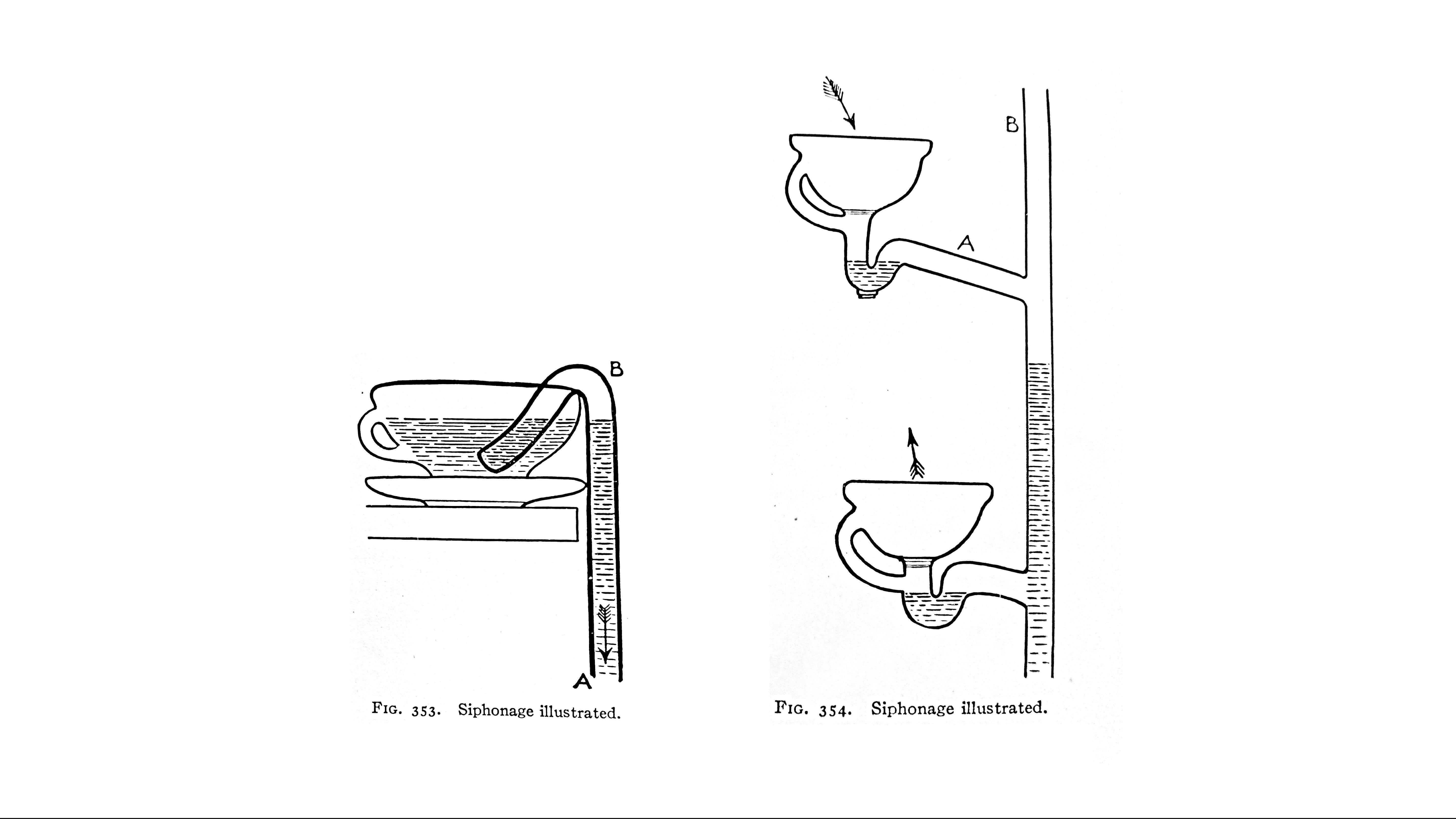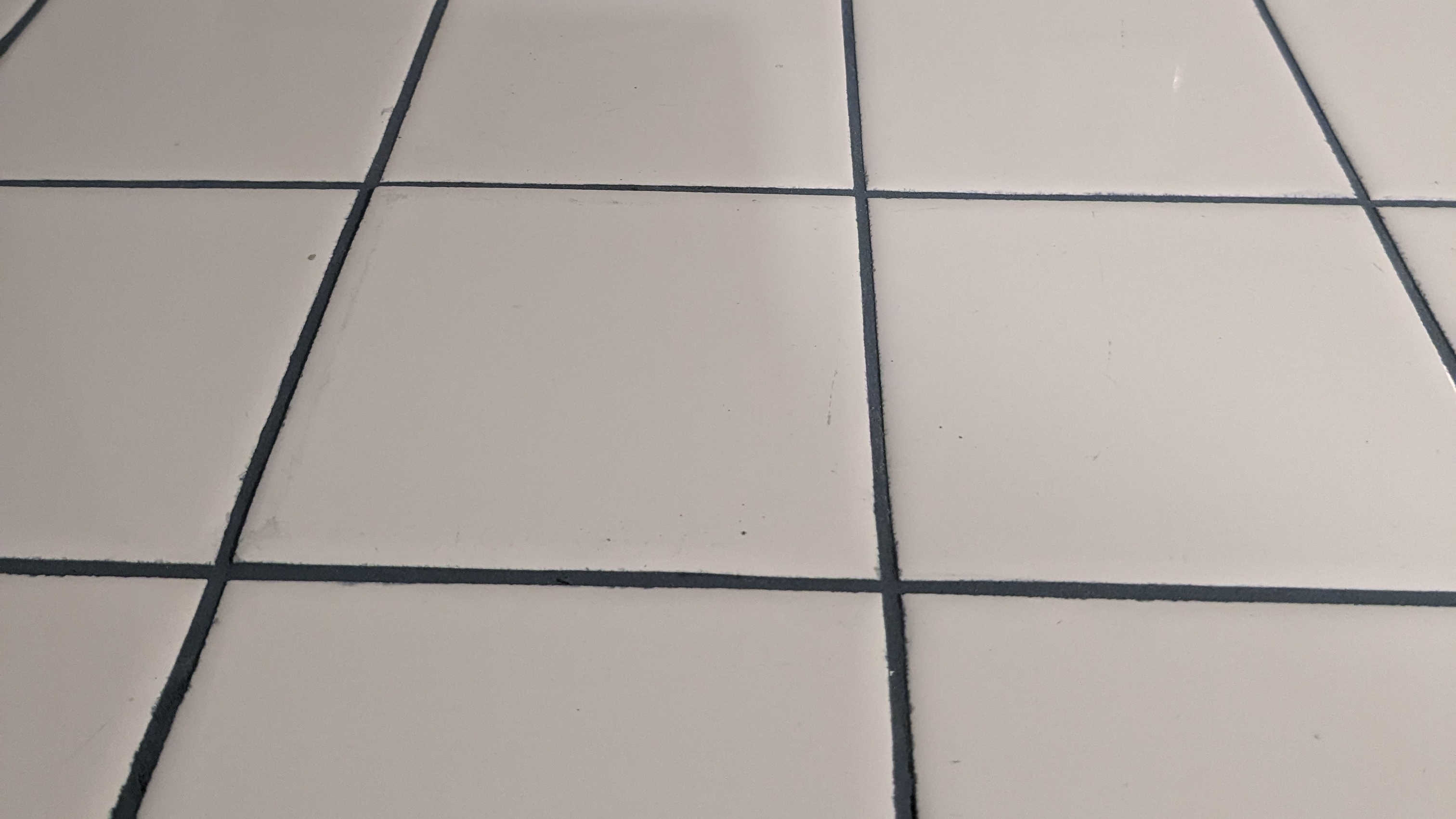For Part 1, click here.
For Part 2, click here.
For Part 3, click here.
Water-Traps
Water-traps have been used for many years in chemists’ laboratories to prevent the passage of gases, and they are thoroughly reliable. They depend for security upon a water-seal, perhaps only an inch or two in depth. Since this will soon evaporate in warm weather or freeze in winter, the supply must be replenished at intervals. Therefore, any plumbing-fixture which is not in constant use should be cut off. Siphonage is due to the pulling action of one trap upon another, or of a column or water emptied into a soil- or waste-pipe and passing by a branch trap on a lower floor. In either case the water-seal in the second trap is forced or the trap partly emptied and its efficiency destroyed. This action can be prevented by attaching a “black-air” pipe to the crown of the trap and carrying the same above the roof.
Valve traps are not sanitary, except to resist tidal pressure. Most “bottle” or pot traps are miniature cesspools which collect grease and filth; patented devices are usually makeshifts, and are not permitted by health-boards in large cities. The “Sanoz” trap is an exception to the rule, and has been officially approved and used in public buildings.



Water-Closets
The best plumbing fixtures are cheapest in the long run. The siphon-jet water-closet is absolutely self-cleansing, but it consumes a great deal of water. The low cistern is almost noiseless, which is advantageous in many situations. The wash-out closet requires attention to keep it sweet and clean. The long-hopper soon gets foul and is out of date; whereas a short-hopper with an enameled iron trap costs little and is economical and sanitary; it is especially adapted to servants’ use. When houses are not occupied during the winter, the water-closet traps should be sponged out and filled with kerosene or glycerin to prevent freezing.
Wash-Tubs
Wooden wash-tubs are very unsanitary, as they rot, leak, and become foul and slimy. Slate and soapstone are hard to keep tight. Porcelain and enameled iron are expensive, while Alberine stone is economical and easy to keep clean.
To be continued….
- From The Standard Family Physician: A Practical International Encyclopedia of Medicine and Hygiene Especially Prepared for the Household. Copyright 1907 by Funk & Wagnalls.





Leave a Reply